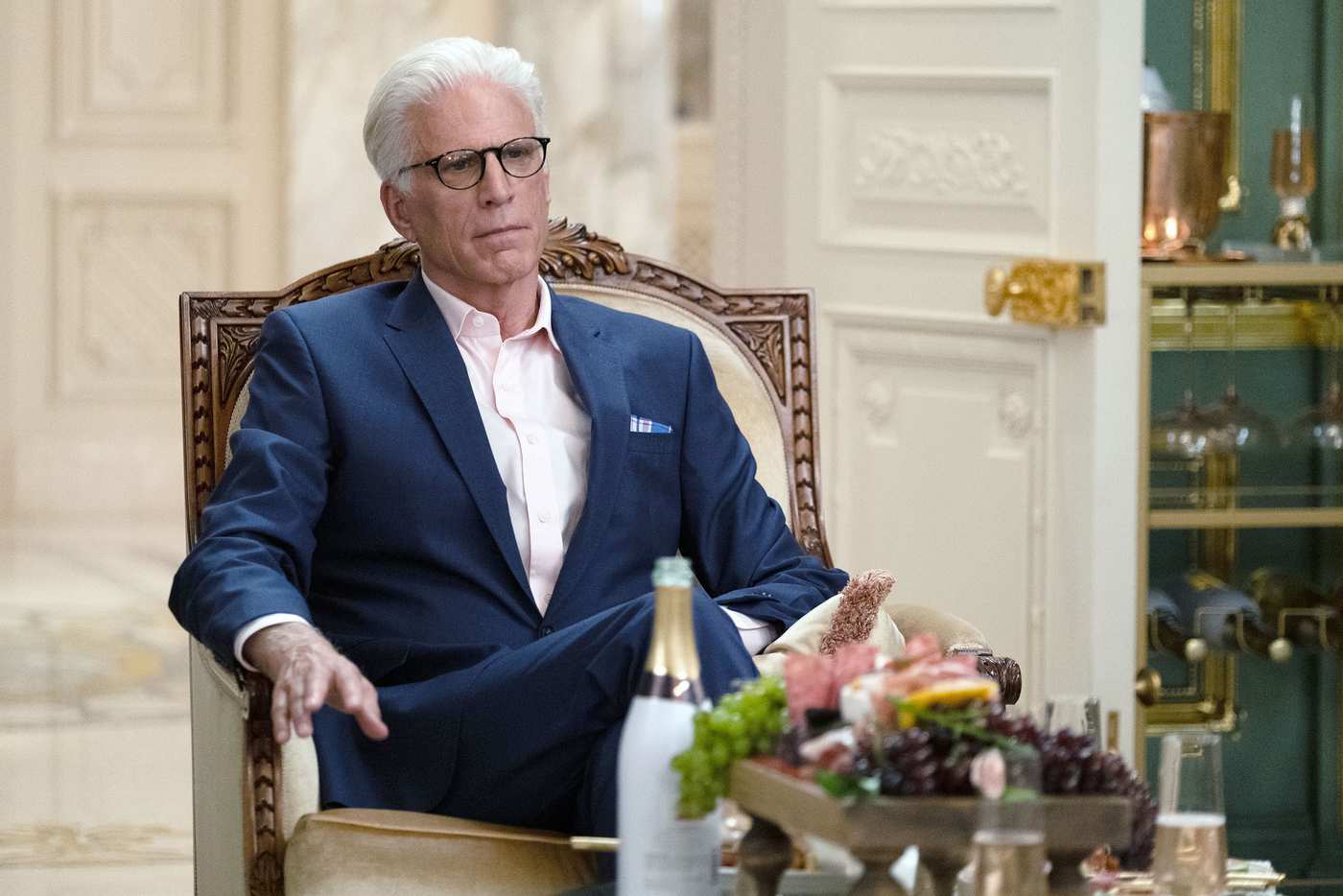
The Good Place’s Final Twist
by Kathryn VanArendonkAgain and again throughout its four seasons, The Good Place pulled the rug out from under you. The show’s first twist, the most impressive and indelible, was the discovery that Chidi, Eleanor, Tahani, and Jason were actually in the Bad Place. Then came an almost constantly running machinery of twistiness, as the show doubled back on itself and pulled off restarts and surprises again and again. They were rebooted! Many times! They were sent back to Earth, the guy with the ultimate key to goodness was actually miserable, the Bad Place was broken, the Good Place was broken, the entire system was a disaster! Meanwhile, the show’s bigger question about how we should live remained shielded within a layer of unknowing. It was the mystery of existence packaged inside the mystery of “No, seriously, what is really going on?”
That sense of twist surprise waned in the final season. However lovely and endearing its characters were, the seams of the show’s inner structure began showing more clearly. The things meant to disguise them — mostly Eleanor and Chidi’s continually doomed love — looked and felt like distractions. But in its final episode, The Good Place unfurled one last surprise: a glorious, straightforward, naked embrace of the essential fact about life we all know. Everything ends, and no one knows for certain what that ending looks like.
What happens after you die? The first episode of The Good Place started with an answer: You go to a frozen-yogurt-filled paradise where you hang out with your soul mate and take flying lessons for eternity. That answer ended up being false, but not quite in the way that the show initially suggested. The Good Place — the real Good Place, once the system had been fixed so that it was no longer an impossible goal to achieve — does look pretty close to that original answer from the first episode. It’s a happy, brightly colored place full of the best parties you could ever want and unlimited time with your soul mate, your friends, and your family.
But in the penultimate episode, “Patty,” the show concluded that what makes life worth living is the knowledge that there can’t be an absolute, final, party-for-eternity Good Place. People need the option to choose to leave, a way to no longer exist. The final door Michael designs is one we cannot see beyond, a door that leads to a complete and unknowable end. In the finale, the last gift that Eleanor gives him is the ability to go through a door of his own, to mortality and life on Earth and, when the time comes, judgment in the afterlife that he and his friends built together. He, too, will end.
It feels cheap to say that the final twist of The Good Place is there is no twist. But there’s something lovely and right about the show’s decision to abandon its twisting mechanisms and accept the obvious. It has always been two kinds of mystery at once: A puzzle-box mystery that continually offered up solutions to new problems, doling out “aha!” moments of revelation and then immediately producing the next puzzle to be solved; and a John Donne, key-to-all-mythologies, epistemological kind of mystery. Why are we here? What happens after we die? What is the nature of goodness? While The Good Place pulled off the structure of its puzzle box remarkably well, the reality is that there could never be a satisfying answer to its second mystery that was not also deeply obvious. There’s no answer to “What is the nature of goodness?” that could be surprising, and there’s no answer to “What happens after we die?” that could ever be truly satisfying.
Instead, The Good Place chose to embrace those things. The answer to “What happens after we die?” came in Chidi’s Buddhism-inspired speech to Eleanor about waves in the ocean, an image of water that temporarily forms itself into a powerful, meaningful, organized thing, and then recedes back to where it belongs. The answer to “What is the nature of goodness?” was the same answer The Good Place has been offering up from its earliest seasons: Goodness is about balancing your own happiness with the need to connect with and help others. There is no closing hairpin turn, no last moment where the show reboots everything all over again. The final twist is that everything ends, we don’t know exactly what that looks like, and that’s okay.
In one last bit of apt narrative symmetry, The Good Place’s door to the unknown is a perfect metaphor for ending a television show on good terms. After you walk through the door and the show is done, there will be an absence. A thing used to exist and now it doesn’t, which is unbearably sad. But to have had meaning in the first place, The Good Place needed to have an ending. When everyone’s at peace, it’s time to say good-bye. It was a delight to have The Good Place on TV, and it’s even better that the show got to walk through the door on its own terms.